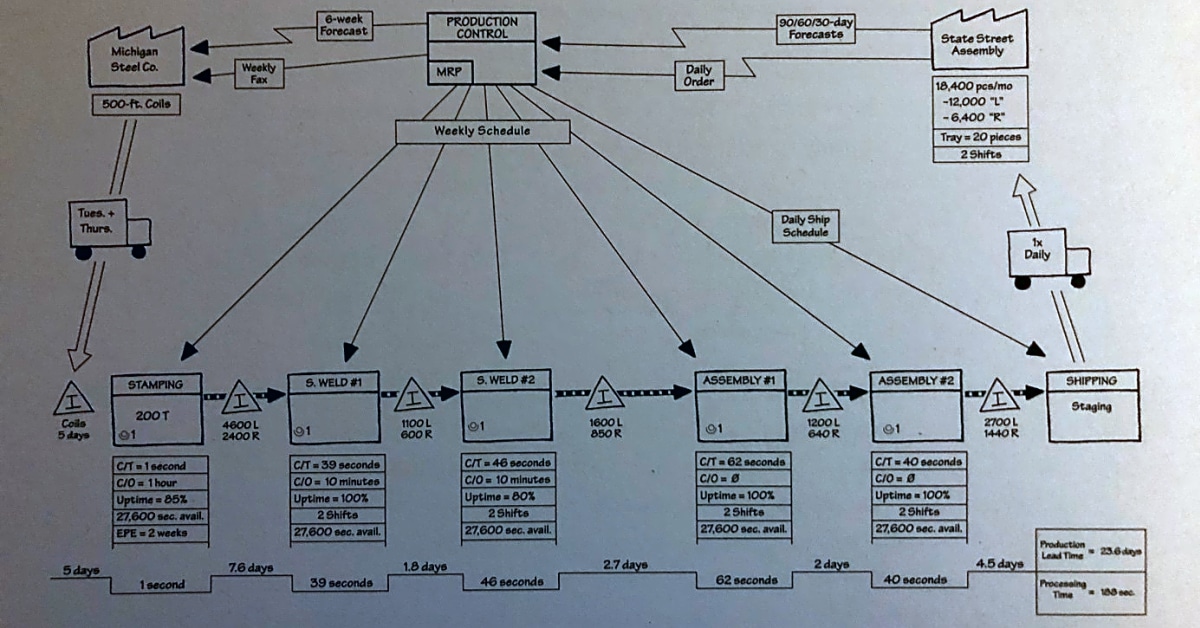In today’s fast-paced business world, processes are the backbone of any successful organization. They dictate how tasks are completed, resources are allocated, and goals are achieved. However, without a clear understanding of these processes, it can be challenging to identify areas for improvement and effectively manage them. This is where the power of visualization comes in. By creating visual representations of processes, teams can gain a better understanding of how they work and identify opportunities for optimization. In this article, we will explore various strategies and techniques for visualizing processes, with a focus on improving understanding and driving team building. Whether you are new to process improvement or looking to enhance your existing practices, this article will provide valuable insights and tips to help you succeed. So let’s dive into the world of process visualization and discover how it can transform your organization’s operations.
To begin, let’s delve into the concept of visualizing processes and why it is so important. As a leader, you are responsible for overseeing various tasks and ensuring they are carried out efficiently. However, with so many moving parts, it can be difficult to have a clear understanding of every process within your organization. This is where visualizing processes comes in. By creating diagrams, flowcharts, or other visual representations of your processes, you can gain a better understanding of how they work and identify any inefficiencies or areas for improvement.
For example, a flowchart can help you see the steps involved in a particular process and pinpoint where bottlenecks may occur. This allows you to make informed decisions on how to streamline operations and improve overall efficiency.
Another benefit of visualizing processes is that it can help with team building. By involving your team in the process, you can foster a collaborative environment where everyone feels invested in improving operations. This can lead to increased motivation, productivity, and overall success.
Involving Your Team
As a leader, it is important to involve your team in the process of visualizing processes. Not only does this promote a collaborative and inclusive work environment, but it also allows for a more thorough and accurate understanding of the processes at hand. Here are some tips on how to use visualizing processes as a team-building tool:
- Encourage participation: When working on visualizing processes, make sure to involve team members from all levels and departments. This not only ensures a diverse perspective, but also fosters a sense of ownership and investment in the process.
- Use interactive methods: Instead of simply presenting a visual representation of the process, try using interactive methods such as group brainstorming or role-playing. This allows for team members to actively engage with the process and contribute their ideas.
- Provide training: Not all team members may have experience with visualizing processes, so it is important to provide training and resources to ensure everyone is on the same page.
- Encourage feedback: Visualizing processes is an ongoing process, so make sure to encourage team members to provide feedback and suggestions for improvement. This not only strengthens the team dynamic, but also leads to continuous improvement of processes.
How to Visualize Processes
Visualizing processes is an essential tool for leaders looking to improve their business operations. By breaking down complex processes into visual representations, leaders can better understand their operations and identify areas for improvement. Here are some tips and techniques for creating effective visual representations:
1. Start with a clear objective
Before you begin the process of visualizing, it’s important to have a clear objective in mind. What specific aspect of your operations do you want to improve? This will help guide your visualization and ensure that it is focused and effective.
2. Use flowcharts or diagrams
Flowcharts or diagrams are great tools for visualizing processes. They allow you to map out each step in a process and easily identify any bottlenecks or inefficiencies. Be sure to use clear and easy-to-understand symbols and labels in your flowchart.
3. Utilize color and design
Color and design can play a crucial role in making your visual representation effective. Use different colors to highlight different steps in the process, or to emphasize important points. Also, consider using different shapes or designs to represent different elements within the process.
4. Involve your team
Visualizing processes can be a great team building exercise. Involve your team in the process and encourage them to share their insights and perspectives. This will not only help improve the visualization, but also increase buy-in and engagement from your team.
5. Continuously review and update
Processes are constantly evolving, so it’s important to continuously review and update your visual representations. Regularly assess if there are any changes or improvements that can be made, and make updates as needed.
The Benefits of Visualizing Processes
Visualizing processes is a powerful technique that can bring numerous benefits to leaders in today’s fast-paced business world. By breaking down complex processes into visual representations, leaders can gain a better understanding of their operations and identify areas for improvement.
One of the main benefits of visualizing processes is that it allows leaders to have a clearer and more comprehensive view of their organization’s operations. This is especially important in today’s business landscape where processes can be complex and constantly evolving. By visualizing processes, leaders can easily identify bottlenecks, inefficiencies, and areas for improvement. This can lead to better decision-making and ultimately, improved organizational efficiency and performance.
Moreover, visualizing processes also helps leaders communicate effectively with their team members. Visual representations are easier to understand and can effectively convey information that might otherwise be difficult to explain verbally. This can improve team communication and collaboration, leading to a more efficient and cohesive team.
Another benefit of visualizing processes is that it allows leaders to track progress and monitor performance. By having a clear visual representation of processes, leaders can easily track progress and identify any deviations from the expected outcome. This enables them to take prompt action and make necessary adjustments to ensure that their operations are running smoothly.
In addition, visualizing processes can also serve as a useful training tool for new team members. By providing a visual representation of processes, new team members can quickly understand how things work and get up to speed faster. This can save time and resources for both the leader and the new team member.
Overall, leaders should use the technique of visualizing processes because it brings numerous benefits such as better understanding of operations, improved decision-making, effective communication, progress tracking, and efficient training.
In conclusion, visualizing processes is a powerful tool for leaders looking to improve their operational leadership skills. By breaking down complex processes into visual representations, leaders can gain a better understanding of their operations and identify areas for improvement. This not only leads to increased efficiency, but also fosters a collaborative and motivated team. So next time you are faced with a challenging process, consider visualizing it to gain a better understanding and drive improvement.







